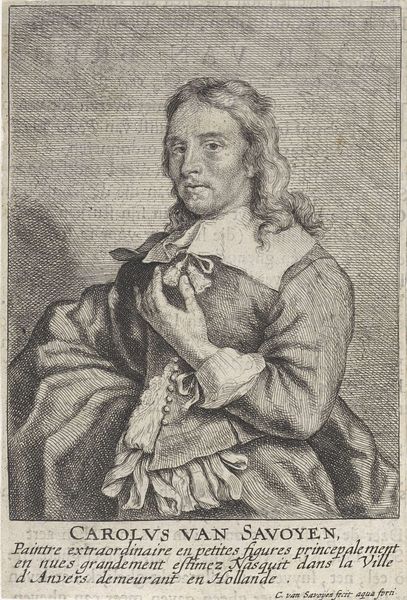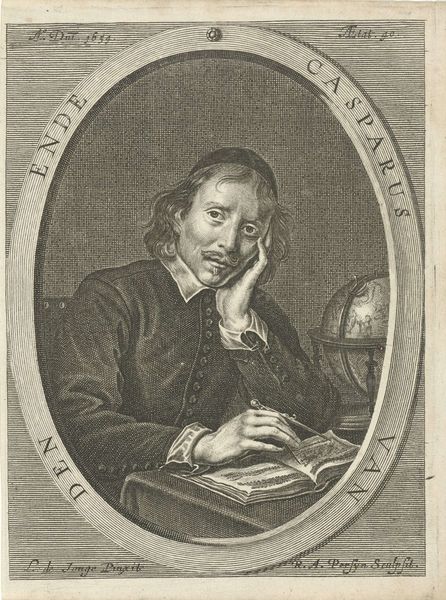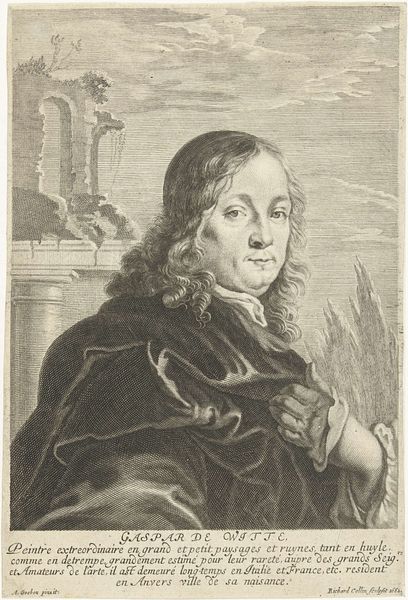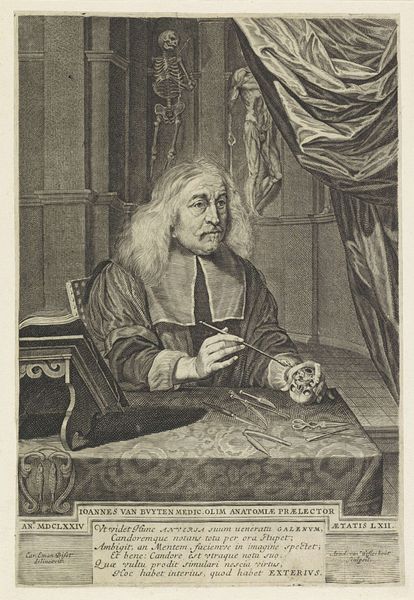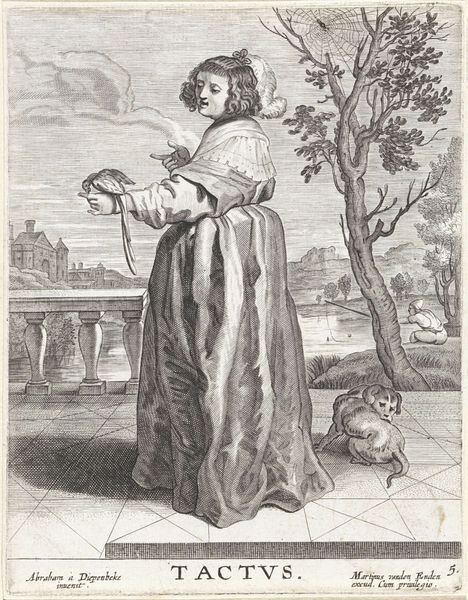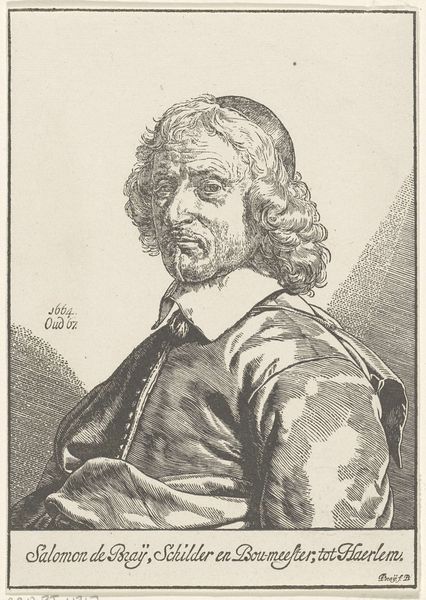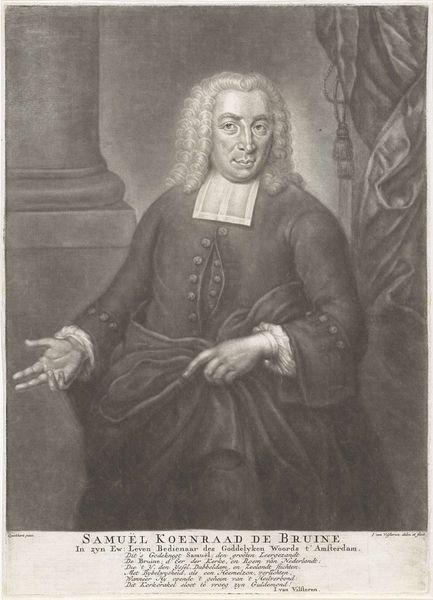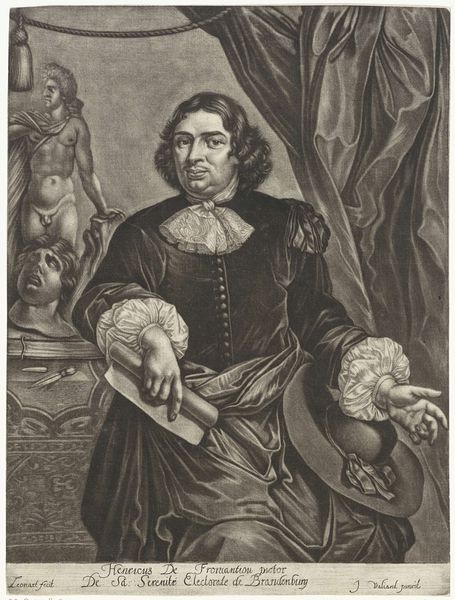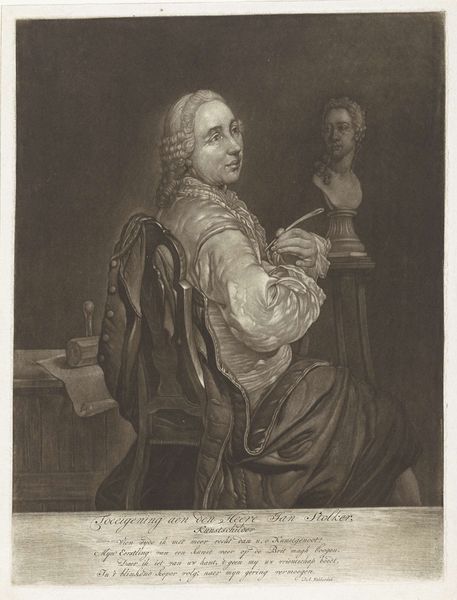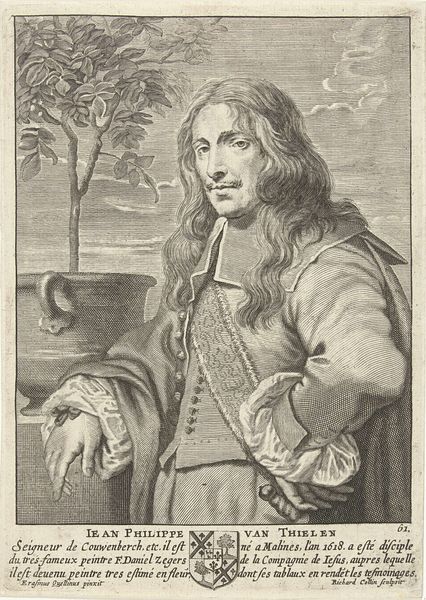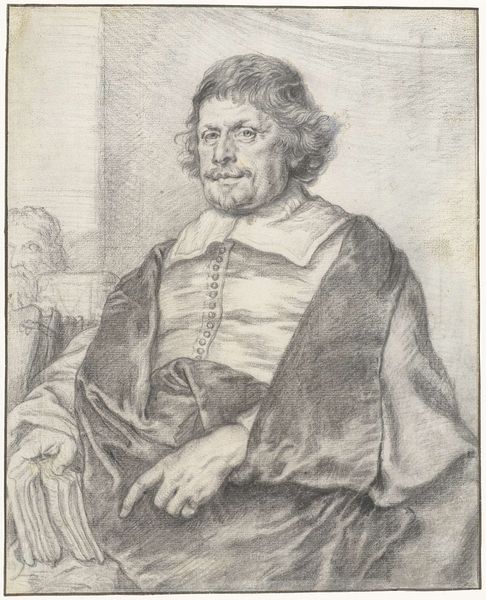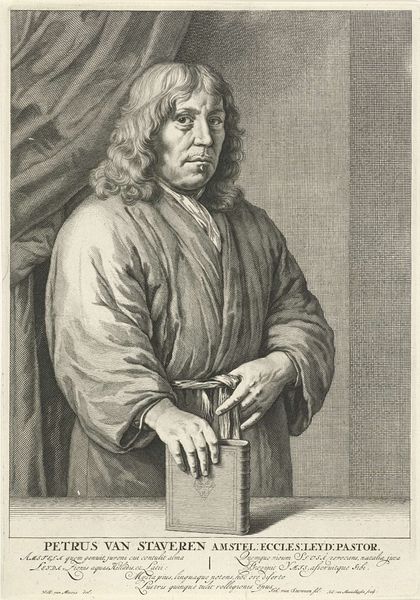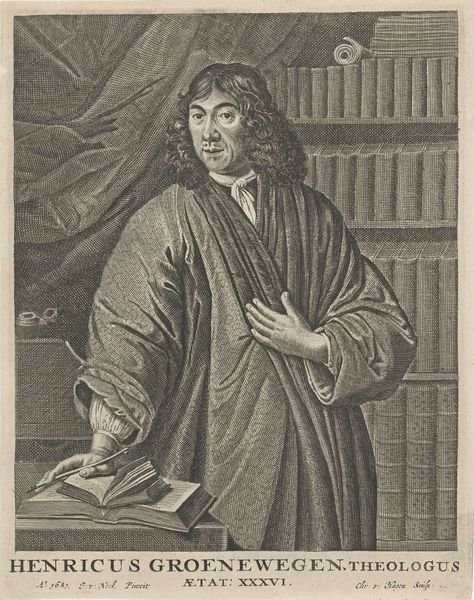
print, engraving
#
portrait
#
baroque
#
dutch-golden-age
# print
#
old engraving style
#
historical photography
#
portrait reference
#
engraving
Dimensions: height 200 mm, width 141 mm
Copyright: Rijks Museum: Open Domain
This is Coenraet Waumans's 17th-century portrait of the painter Jan van den Hecke, now held at the Rijksmuseum. The open palm of the hand, displayed prominently, is a powerful gesture. It is more than a mere greeting; it is an invitation. Consider the ancient origins of this gesture, echoing through classical oratory and religious iconography. In antiquity, the open hand symbolized sincerity, truth, and eloquence. We see it in Roman sculptures, a sign of authority and persuasion. In early Christian art, a similar gesture signifies divine blessing or revelation. Over time, the symbol has morphed into a secular affirmation of credibility, subtly yet profoundly influencing our perception. The emotional undercurrent is powerful. By opening his hand, Van den Hecke seeks to connect, to establish trust and rapport with the viewer. This simple yet potent symbol resonates deep within our collective memory, evoking a sense of openness and vulnerability. A primal impulse invites us to recognize our shared humanity. Through the ages, this same symbol has resurfaced and adapted, proving how cultural memory reshapes our interpretations.
Comments
No comments
Be the first to comment and join the conversation on the ultimate creative platform.
